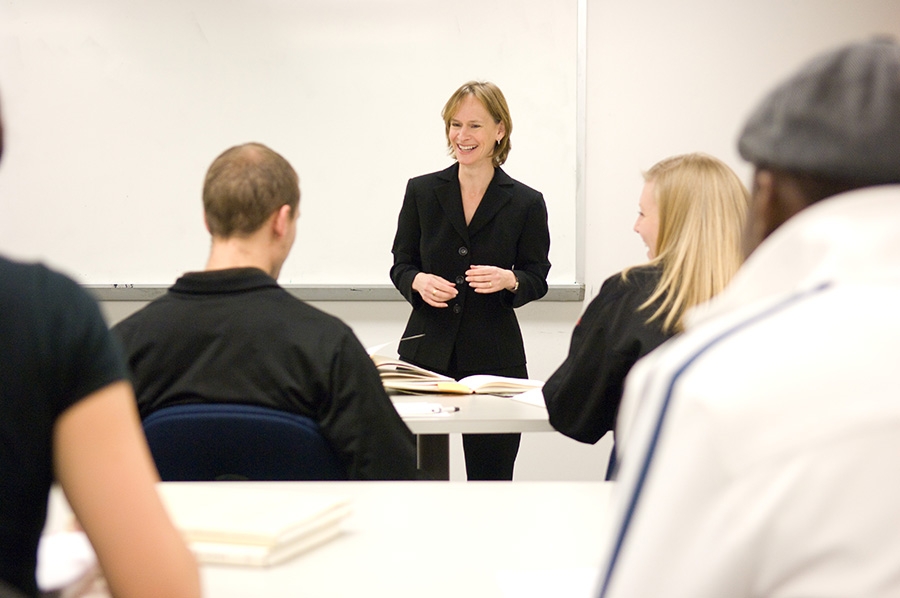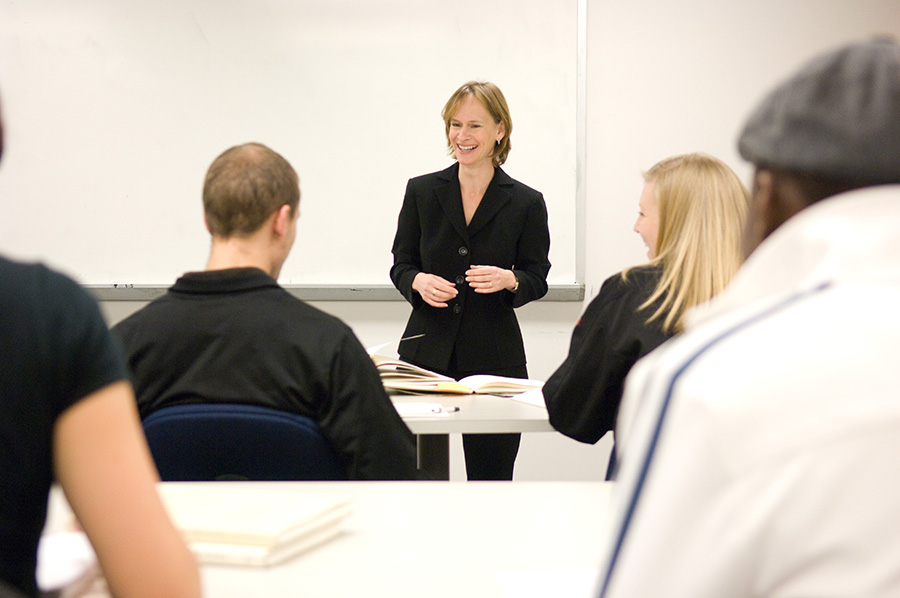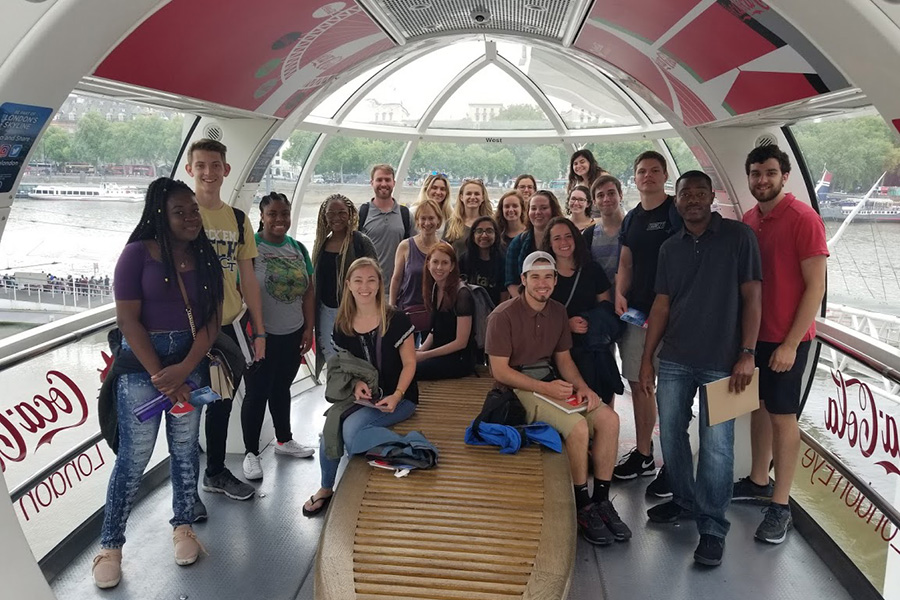
 |
| Lisa Rosenstein is the founder of the Charles E. Gearing Program in Engineering Communication. |
With her Ph.D. in english literature, Lisa Rosenstein is a bit of an anomaly among her colleagues in the School of Civil and Environmental Engineering.
While she doesn’t teach fluid mechanics or structures, her instruction is no less foundational for her students to succeed at Tech and in the professional world. In 1998, Rosenstein joined the School to develop the Engineering Communications Program, which integrates written, oral and visual communication skills into the engineering curriculum at both the undergraduate and graduate levels. In May 2020, she was promoted to Principal Academic Professional in recognition of her contributions to the School over more than 20 years.
Karen and John Huff School Chair Don Webster says that the communications program is a major benefit for the School that sets a Georgia Tech education apart from other leading civil and environmental engineering programs around the nation.
“Dr. Rosenstein’s pioneering engineering communications programs have become enduring legacies and generate envy among many peer institutions. We are very fortunate to have her as a member of our academic team,” Webster said.
Engineering schools across the country—including Georgia Tech—often required students to take courses in technical writing in English departments, but Georgia Tech was the one of the first to embed this instruction within the individual engineering programs themselves. The shift allows a wide range of communications skills like report writing, data display, and explaining research to nontechnical audiences to be taught within the context of the discipline. This forward-thinking program was made possible by the Mundy family, which gave the School a generous gift to create a new model of engineering education.
“These programs have grown across the country,” Rosenstein said. “We’re not the only ones who have them any more, but we were very much at the vanguard.”
Rosenstein’s tenure at Georgia Tech goes back to the late 1980s, when she began teaching technical writing for the English Department while finishing her Ph.D. at nearby Emory University. When Georgia Tech restructured its units several years later, these courses offered
 |
| Rosenstein and a group of students pose on the London Eye after studying the axial forces in the cables and supports during the CEE London study abroad program. |
in support of the engineering curriculum were moved into the College of Engineering.
Rosenstein was hired to develop communications programs for both the Schools of Civil and Environmental Engineering and Materials Science Engineering, where she remained a joint appointment until 2015. Rosenstein was given a blank slate: no one at the time knew what this type of program should look like simply because it didn’t exist before.
“I had taught at Tech, knew the students, knew what they needed to know and, crucially, knew the most effective way to teach them, so I was the obvious choice to envision and create this program from the ground up,” Rosenstein said.
In fact, Rosenstein’s role was so unusual that the Institute didn’t really know what to do with her initially. She was hired as a staff member, though she functioned as faculty. She later became part of a new classification known as Academic Professionals.
“It’s a cohort of academics who contribute to the educational mission of the Institute but are not on a traditional tenure track,” Rosenstein said. “You are an academic, typically have a Ph.D., but don’t do the typical work of academics. I have a Ph.D. in English, so I couldn’t possibly be an engineering professor. But I work for an engineering school.”
CEE’s Engineering Communications Program is an in-house model, meaning that communications material is incorporated into the curricula of engineering courses, rather than being offered as stand-alone classes. Rosenstein serves as a co-instructor or guest lecturer in several courses at both the undergraduate and graduate levels. For example, she’s a co-instructor in Engineering Systems, a core course in which she introduces students to the three modes of engineering communication: written, visual, and oral.
She is also a co-instructor for senior design courses, in which she teaches students how to write design reports and deliver oral presenations to engineering firms, businesses or government agencies. By teaching in a variety of course levels, Rosenstein has the benefit of teaching the same students over the years as they matriculate through their degree programs.
“One of the great benefits of having an in-house person is the consistency. I know what they know because I’ve taught them,” Rosenstein said.
Rosenstein has also helped the School expand its international offerings. She helped create the Global Engineering Leadership Minor and she co-leads CEE’s study abroad program in London with Associate Professor Lauren Stewart.
“We are the first program to take integrated communications instruction into a study abroad program,” Rosenstein says.
While it hasn’t always been easy to get engineering students excited about communications, Rosenstein takes pride in knowing that she is equipping them with skills to explain complex, technical material clearly and concisely.
“I get so many emails from former students,” Rosenstein says. “Once they get into the work place, they often see that what they’ve learned is so much beyond what any of the other new hires have learned. The students themselves report their lived experience of what’s valued in the work place.”
